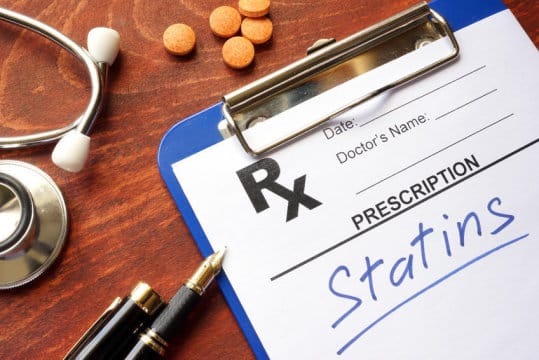The known benefits of statin therapy in preventing cardiovascular disease, including heart attacks and strokes, outweigh the slightly increased risk of muscle symptoms, according to late-breaking research presented in a Hot Line session today at ESC Congress 2022.1
Principal investigator Professor Colin Baigent, Director of the Medical Research Council Population Health Research Unit at the University of Oxford, UK said: “For most people taking a statin, any muscle-related symptoms they experience are not likely to be caused by the drug. The known protective effects of statins against cardiovascular disease greatly exceed the slightly increased risk of muscle symptoms. For example, for every 1,000 people taking a moderate intensity statin, the treatment would cause 11 generally mild episodes of muscle pain or weakness in the first year with no significant excess in subsequent years. Over a five-year period, statins typically prevent 50 major vascular events in those with pre-existing vascular disease, and 25 major vascular events in those with no pre-existing vascular disease, with longer treatment yielding larger benefits.”
Statin therapy is effective for the prevention of cardiovascular disease, the world’s largest killer, and is widely prescribed. However, there have been concerns that statins may cause muscle pain or weakness, leading some patients to stop taking their treatment. This analysis was conducted to resolve uncertainties around the possible effects of statins on muscle symptoms.
This was an individual participant data meta-analysis of all recorded muscle symptoms in large-scale randomized blinded double-blind trials of statin therapy, led by researchers from Oxford Population Health. The researchers compiled data from 23 trials from the Cholesterol Treatment Trialists’ (CTT) Collaboration, with information on nearly 155,000 patients. All trials included at least 1,000 patients and at least two years of scheduled treatment. Adverse event data were collected for all individual participants in 19 large randomized double-blind trials of statin therapy versus placebo (123,940 patients) and in four randomized double-blind trials of more intensive versus less intensive statin therapy (30,724 patients).
The researchers examined all data on adverse effects reported by patients taking part in the clinical trials, as well as data on the timing of and reasons for stopping study treatment, use of other (non-trial) medications, other health conditions, and laboratory results that would help in the interpretation of particular adverse events.
In the 19 trials of any statin regimen versus placebo, during a median follow-up of 4.3 years, 16,835 patients (27.1%) in the statin group and 16,446 (26.6%) in the placebo group reported muscle pain or weakness (rate ratio [RR] 1.03; 95% confidence interval [CI] 1.01–1.06). In the first year, there was a 7% relative increase in reports of muscle pain or weakness among those allocated to a statin (RR 1.07; 95% CI 1.04–1.10), which corresponded to an absolute excess rate of 11 (95% CI 6–16)
reports per 1,000 person years; in the remaining follow-up period there was no evidence of any excess risk (RR 0.99; 95% CI 0.96–1.02). During the first year, only about 1 in 15 reported cases of muscle pain or weakness were attributable to statin therapy.
In the four trials of more intensive versus less intensive statin therapy, high-intensity regimens (e.g. atorvastatin 40 to 80 mg daily or rosuvastatin 20 to 40 mg daily) resulted in a larger relative increase in the rate of muscle pain or weakness than moderate intensity regimens, with rate ratios of 1.08 (95% CI 1.04–1.13) and 1.02 (95% CI 1.00–1.05), respectively.
Professor Baigent said: “Muscle symptoms such as pain or weakness were experienced by similar numbers of people in the statin and placebo groups. Statins were not the cause of muscle pain in more than 93% of patients who reported symptoms. Statin therapy marginally increased the frequency, but not the severity, of muscle-related symptoms. The small excess risk of muscle symptoms occurred principally during the first year after commencing therapy.”
He concluded: “ The results should help doctors and patients to make informed decisions about whether to start or remain on statin therapy. Information provided to doctors and patients should be reviewed in light of our findings, including drug labeling and guidelines.”




